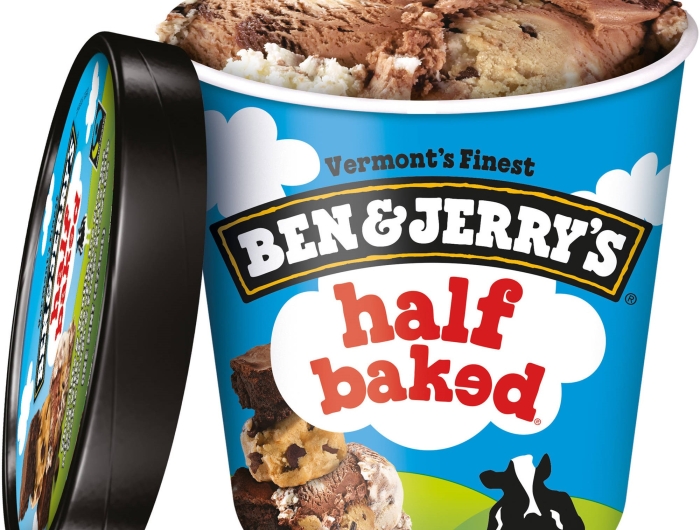Ice cream shops serving coronaries in cones

Many frozen creations equal to 2 or 3 quarter pounders
Everyone knows that ice cream isn’t a health food. And the food sleuths at the nonprofit Center for Science in the Public Interest (CSPI) certainly didn’t expect to find the nutritional equivalent of broccoli in America’s top ice cream parlors. But the staggering calorie and saturated fat content of most of the treats served up at chains like Baskin-Robbins, Ben & Jerry’s, Cold Stone Creamery, Friendly’s, Häagen-Dazs, and TCBY is bound to surprise most consumers.
Some of CSPI’s findings—published in the July/August issue of its Nutrition Action Healthletter—include:
- Ben & Jerry’s empty Waffle Cone Dipped in Chocolate has 320 calories and a half a day’s worth of saturated fat—the equivalent of a half-pound rack of BBQ baby back ribs. Fill it with a regular scoop of Chunky Monkey Ice Cream and the cone becomes worse (820 calories and 30 grams of saturated fat) than a full one-pound rack of ribs.
- Cold Stone Creamery’s regular Mud Pie Mojo—a mixture of coffee ice cream, roasted almonds, fudge, Oreos, peanut butter, and whipped topping—is the equivalent of two Pizza Hut Personal Pan Pepperoni Pizzas (1,180 calories and 26 grams of saturated fat).
- Häagen-Dazs’ Mint Chip Dazzler is a portable sundae with three scoops of mint chip ice cream, hot fudge, Oreos, chocolate sprinkles, and whipped cream. Nutritionally, it’s like eating a T-bone steak, Caesar salad, and a baked potato with sour cream (1,270 calories and 38 grams of saturated fat).
“It’s as if these ice cream shops were competing with each other to see who could inflict the greatest toll on our arteries and waistlines,” said CSPI senior nutritionist Jayne Hurley. “It’s not just regular ice cream, but premium. It’s not just one scoop, but two or three. It’s not just a cone, but a chocolate-dipped waffle cone. It’s not just hot fudge, nuts, and whipped cream but every conceivable combination of cookie, candy, and chocolate.”
Even a seemingly austere single scoop of premium ice cream provides 250 to 350 calories and a half a day’s worth of saturated fat. But that’s dwarfed by many ice cream parlor offerings that exceed 1,000 calories. One large Baskin-Robbins Vanilla Milkshake has 1,070 calories and 32 grams of saturated fat—that’s like drinking three McDonald’s Quarter Pounders, according to CSPI. One sundae at Friendly’s, the 5-scoop Candy Shop Reese’s Pieces, has 1,310 calories, a whole day’s worth of fat, and two whole days’ worth of saturated fat.
Not even TCBY—the ubiquitous frozen yogurt chain—can resist the temptation to pile on the calories and sat fat with add-ons like syrups and candy pieces.
“Frozen yogurt is lower in fat than ice cream, but I doubt that people go into TCBY expecting the calories and saturated fat of two pork chops, a Caesar salad, and a buttered baked potato—in a drink,” Hurley said. TCBY’s Toffee Coffee Cappuccino Chiller has 1,200 calories and a day and a half’s saturated fat.
CSPI’s good news is that you don’t have to avoid ice cream shops altogether. Most chains sell low-fat ice cream, frozen yogurt, sherbert, or sorbet with only 100 to 200 calories and little or no saturated fat per scoop.
“Häagen-Dazs’ delicious sorbet is one of the lowest-calories items we looked at, with only 120 calories in a single scoop,” Hurley said.
If you choose to splurge, says CSPI, your choice should at least be an informed one—but that’s tough when chain restaurants aren’t required to list calorie counts on menu boards. Legislation that would require chain restaurants to do just that has been introduced in several state legislatures and in the District of Columbia. Those measures would let consumers see at a glance that Häagen-Dazs’ Mint Chip Dazzler has more than 10 times the calories of a scoop of sorbet. Menu labeling would also encourage restaurants to compete on the basis of nutrition—and not just decadence and price, according to CSPI.
“No one disputes that the obesity epidemic has many causes,” said CSPI executive director Michael F. Jacobson. “But certainly the sheer size and caloric density of these ‘indulgences’ has something to do with the size of Americans’ pants.”
Most of the numbers in CSPI’s analysis come from the companies themselves. CSPI commissioned independent laboratory analyses of a dozen items for which the chains don’t provide nutrition data.
The ice cream study is the latest in a series of CSPI studies that have examined the nutritional content of pizza, movie theater popcorn, Chinese, Mexican, and Italian restaurants, as well as steak houses, sandwich shops, and the fare at food courts in shopping malls.

